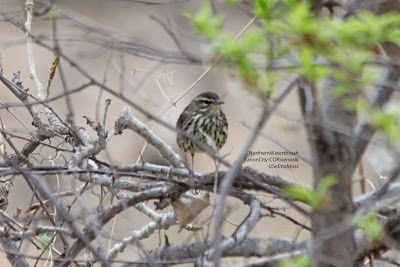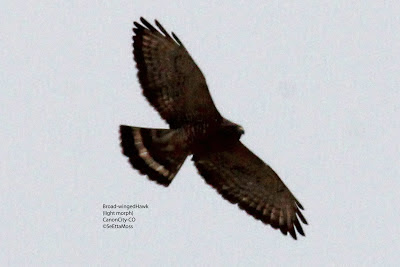4 Northern Waterthrush today including this one

This has been a good spring for Northern Waterthrush here. I found my first today when I opened my car door and started to put on my binoculars--spotted one less than 15 feet away in a small tree then 2 more in the next 10 minutes on the Canon City Riverwalk. I found the one in this photo about 2 miles further east on the Riverwalk. About time I got some good pics of one. SeEtta














